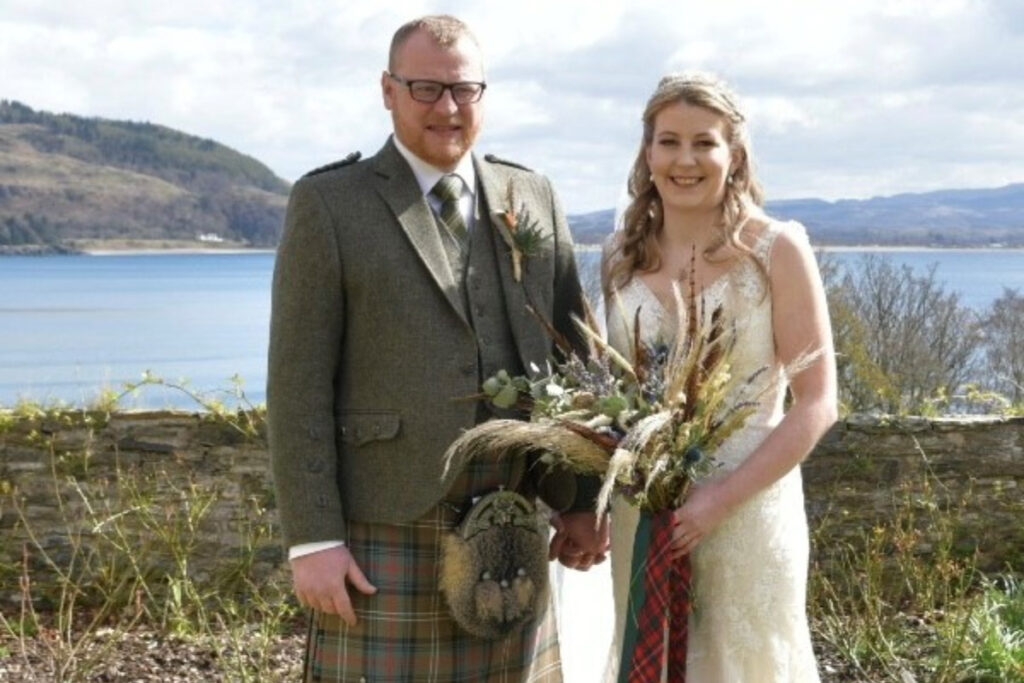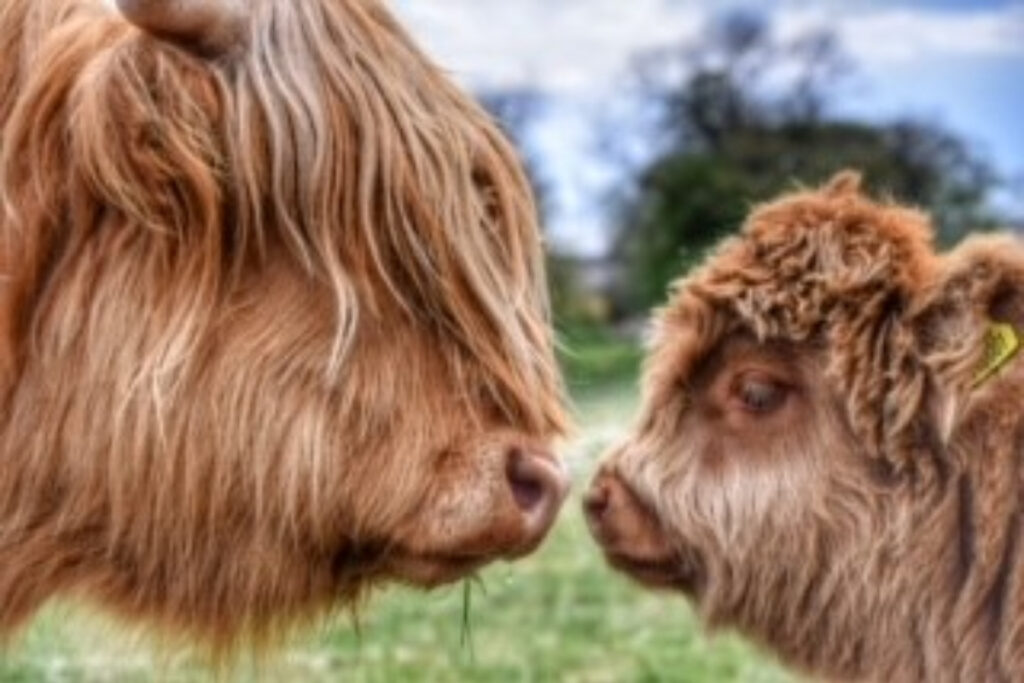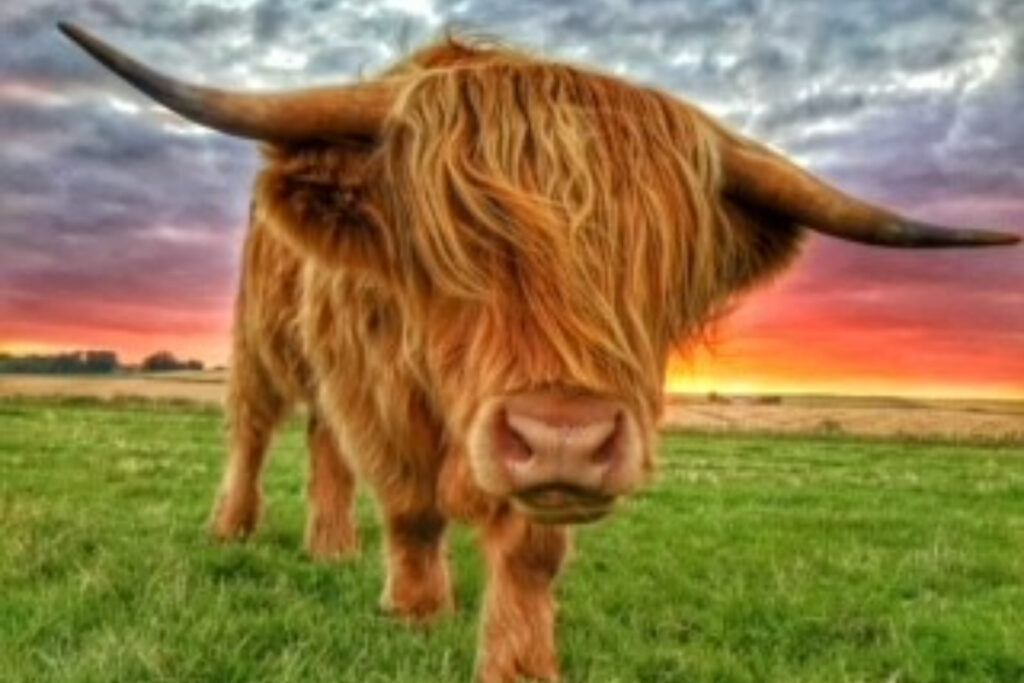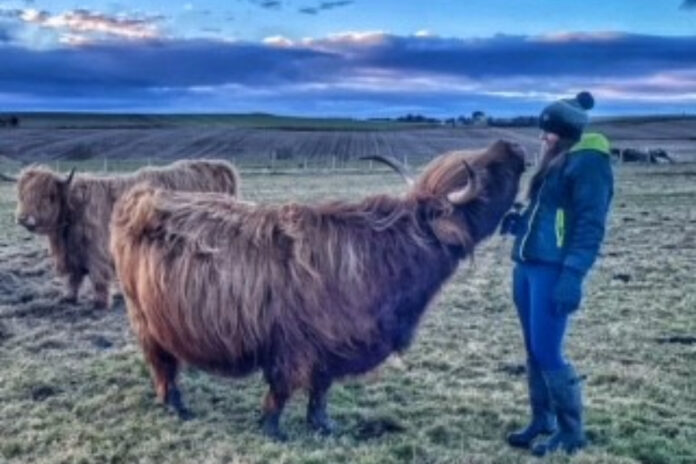That’s Farming editor, Catherina Cunnane, in conversation with Kayleigh Shearer, who farms the Glenfia Fold, 2 Hayhillock Cottage, Ellon, AB41 8DH, with her husband, David, in this week’s Suckler Farmer Focus segment. We discuss their non-farming roots, establishing their Highland cattle fold and challenges.
“We are new to farming and have no family background in farming. My other half was brought up in a country estate, so he came with some knowledge. So, we are first-generation farmers running a 33-acre enterprise, which we own.
We are part-time, although there is no such thing in farming. We both have full-time jobs away from the farm. I am luckily a biology teacher, so I have holidays that I can spend on the farm getting stuff done.
Also, being a biology teacher provides a lot of good background to help with the farm and also, being a farmer gives me a number of insightful aspects of the biology curriculum to help aid the teaching of it.
I completed a safety in agriculture course, and I am about to apply for the be your best self woman in agriculture course.
Highland cattle fold
We have eighteen Highland cattle of varying ages at the moment and hope to have a further seven calves due next year.
We acquired our first Highland in 2019, sourcing our first three from Appin in Argyll and registered the Glenfia fold with the Highland Cattle Society and the local North of Scotland Highland Cattle Group.
It was difficult to source our foundation females as there are so many folds and pedigrees around, so it is difficult to know what is the best one to buy from.
Our first Highland came with a calf at foot and in-calf again. The calf was born the following year, where we bought some more, and every year we have added between 3-5 Highlands.
We started this as a hobby to be able to be self-sufficient and know exactly what was in our meat, and reduce our food miles.
We also have ventured into pigs and poultry for our own consumption. Now, we are just starting out on a farm business adventure. We are planning on doing more calendars this year, and we do sell (around Christmas time) some prints of our photos.
They are giant, hardy (a must in the NE Scotland) friendly beasts. Highland cow meat is lower in cholesterol, high in protein and lower in fat, making it a lean and marbled meat.

Calving
We use a stock bull, and over the last three years, we have used two different bulls. Next year, we are hoping to use a different bull.
This year, calving took place in February/ March as we were getting married in April and did not want to leave in-calf animals for our farm sitter.
Normally calving is Aprilish time to coincide with school holidays – although Highlands tend to calve in peace for our peace of mind, I like to be around.
Being quiet and easy to handle is our main priority. When it comes to horns, we look for nice, symmetrical-shaped horns, and I like them more like a U shape.
We keep heifer calves for breeding (in 3 years’ time) and send males off for slaughter for beef at just under 30-months-old. We have yet to breed from our own calf, so that will be next year.
Highlands are slow maturing, so you would not put them to the bull until they are at least 3. So we have not done this yet.
Traits
The thing with Highlands is they can breed for years and years (16+), so there is no real reason for replacement unless the nature of the beast changes.
Highland cattle cost thousands – depending on pedigree and looks. A bull recently sold for 27,000gns at the Oban show, but generally, females can range from 500-5000 onwards.
Knowing exactly where our food comes from is what we are most passionate about.
Spending time with each other away from the daily grind of our full-time jobs and getting outside in all weathers is another plus.
Also, the unconditional love the animals give you. Nothing beats sitting behind a desk, and I love it, even in heh depths of winter.

Challenges
Weather and money are challenges. With us being first-generation farmers, we have to build everything up from scratch, so this takes time and a lot of money. Machinery is not cheap.
Since we are only three years into our journey, our biggest challenge is having to fence it all.
There was little to no fencing as it was just feed ground. Also, having an engineer as a husband can be very annoying. He is very, very particular on the whole straight fence.
But, in saying that, we have just recently acquired more land and 5 new Highlands.
We hope to have 7 calves next year, which is a large jump from 2 calves this year. I think going forward, we will aim to have 10 breeding cows a year.
We are only 3 years into our journey, and it has been a busy and hard 3 years, but it will be worth it in the end.

Future of suckling
Going forward, we wish to improve pasture quality. If we do not look after the soil, it is not going to give us feed for the winter or grass for the animals to eat during the summer months. We need to also build some outbuildings/ sheds.
I think the future of suckler farming is positive if we can encourage more people to think about where the food comes from, buying local and seasonal food instead of produce that has flown thousands of miles.
The negative side is the price of everything, even just hay/ silage/ fuel/ fertiliser etc, is just going up and up to the point of crazy levels.
Reflection
It has been an experience with its lows and highs, but I would not change what we are doing for anything.
We have learned a lot, and we still have so much to learn as we increase the size of the fold.
Life is too short for regrets; I am more of something failed/did not go to plan, learn from the experience and do not repeat it, type.”
Do you have a Highland cattle fold? To share your story, email – [email protected]
See more Suckler Focus profiles.





